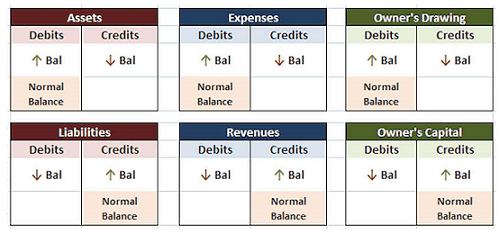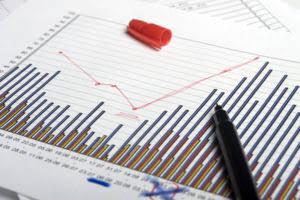
Besides his extensive derivative trading expertise, Adam is an expert in economics and behavioral finance. Adam received his master’s in economics from The New School for Social Research and his Ph.D. from the University of Wisconsin-Madison in sociology. He is a CFA charterholder as well as holding FINRA Series 7, 55 & 63 licenses. He currently researches and teaches economic sociology and the social studies of finance at the Hebrew University in Jerusalem. Disposal of an asset eliminating an asset from an organization’s accounting records. Businesses may decide to depreciable assets dispose of an asset if they sell it, in case of theft, or if the asset depreciates fully.
How Do You Calculate Depreciable Assets?

A fixed asset such as software or a database might only be usable to your business for a certain period of time. This formula will give you greater annual depreciation at the beginning portion of the asset’s useful life, with gradually declining amounts each year until you reach the salvage value. To demonstrate, we’ll use the example of a company purchasing a $50,000 computer server with an expected useful life of five years and a $5,000 salvage value. The third scenario arises if the company finds an eager buyer willing to pay $80,000 for the old trailer.

Fixed rate of Depreciation

The main Grocery Store Accounting advantage of the units of production depreciation method is that it gives you a highly accurate picture of your depreciation cost based on actual numbers, depending on your tracking method. If the useful life is short, then calculated Depreciation will also be less in the early accounting periods. This means that there will be a large difference between tax expense and taxable income at the beginning of the accounting period. Because large losses are realized early, the tax benefit will be spread over a longer period.
- The “sum-of-the-years’-digits” refers to adding the digits in the years of an asset’s useful life.
- Most companies have multiple assets, any of which may be in a period of depreciation.
- There are four allowable methods for calculating depreciation, and which one a company chooses to use depends on that company’s specific circumstances.
- Essentially, a deferred asset is an item that has been paid for but has not yet been used or consumed.
- It is the asset cost that is used when creating a depreciation schedule.
- In the following article, we will explore the topic of deferred assets in more detail, providing examples and explanations to help readers better understand this complex accounting concept.
- Learn more about the benefits of claiming depreciation and depreciation examples with frequently asked questions about depreciation.
What Is Depreciation?
- However, when it comes to taxable income and the related income tax payments, it is a different story.
- These tax regulations affect when the total amount of $700,000 in depreciation is taken.
- This will be done over the next 12 years (15-year lifetime minus three years already).
- The expenditure on the purchase of machinery is not regarded as part of the cost of the period; instead, it is shown as an asset in the balance sheet.
- Intangible property such as patents, copyrights, computer software can be depreciated.
- To amplify this step, assume that a retailer had recorded depreciation on its fleet of delivery trucks up to December 31.
Fixed assets like buildings, vehicles, rental properties, commercial properties, and production equipment all decline over time. Depreciation is an accounting method used to calculate the decrease adjusting entries in value of a fixed asset while it’s used in a company’s revenue-generating operations. SYD suits businesses that want to recover more value upfront, but with more even distribution than they would otherwise get using the double-declining method. The SYD method’s main advantage is that the accelerated depreciation reduces taxable income and taxes owed during the early years of the asset’s life.
Recording Straight-Line Depreciation
Depreciation is often misunderstood as a term for something simply losing value, or as a calculation performed for tax purposes. Depreciation is an important part of your business’s tax returns, but it is a complex concept. Keep reading to learn what depreciation is, how it is calculated and how your depreciation calculation can affect your business. If you have expensive assets, depreciation is a key accounting and tax calculation. Also, depreciation expense is merely a book entry and represents a “non-cash” expense. Therefore, depreciation is a process of cost allocation—not of valuation.
The IRS also allows a company’s tax return to deduct larger amounts of depreciation in the earlier years and smaller deductions in the later years of the assets’ lives. This accelerated depreciation can be used on the tax returns at the same time that straight-line depreciation is used on the company’s financial statements. Another popular method is the Double-declining balance method – an accelerated depreciation method where more of an asset’s cost is depreciated in the early years of the asset’s life. Sum-of-years-digits is a spent depreciation method that results in a more accelerated write-off than the straight-line method, and typically also more accelerated than the declining balance method. Under this method, the annual depreciation is determined by multiplying the depreciable cost by a schedule of fractions. Depreciation accounts for decreases in the value of a company’s assets over time.

Calculating Depreciation Using the Sum-of-the-Years’ Digits Method
Included are the income statement accounts (revenues, expenses, gains, losses), summary accounts (such as income summary), and a sole proprietor’s drawing account. Some valuable items that cannot be measured and expressed in dollars include the company’s outstanding reputation, its customer base, the value of successful consumer brands, and its management team. As a result these items are not reported among the assets appearing on the balance sheet. Note that the estimated salvage value of $8,000 was not considered in calculating each year’s depreciation expense.


